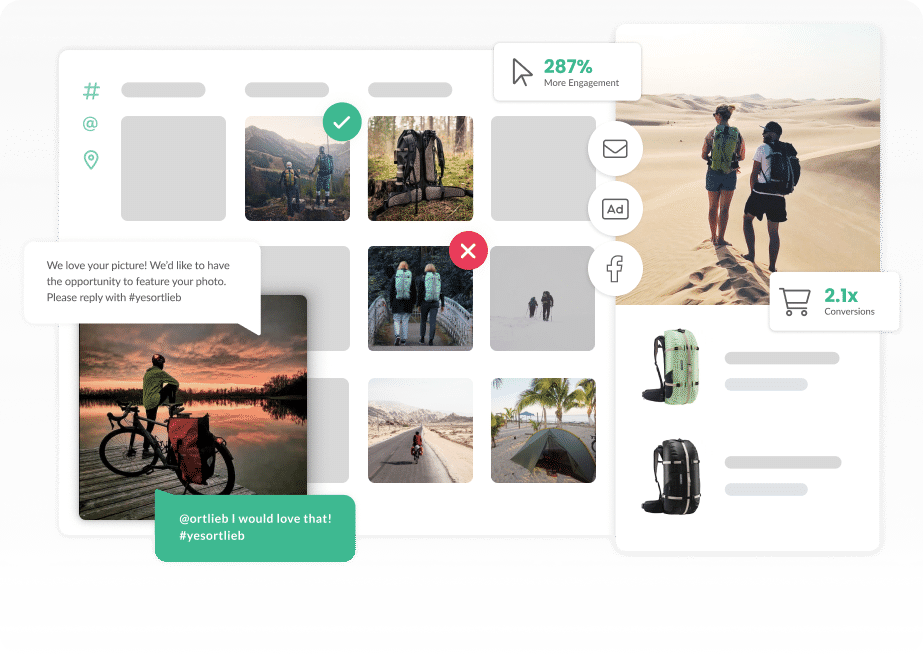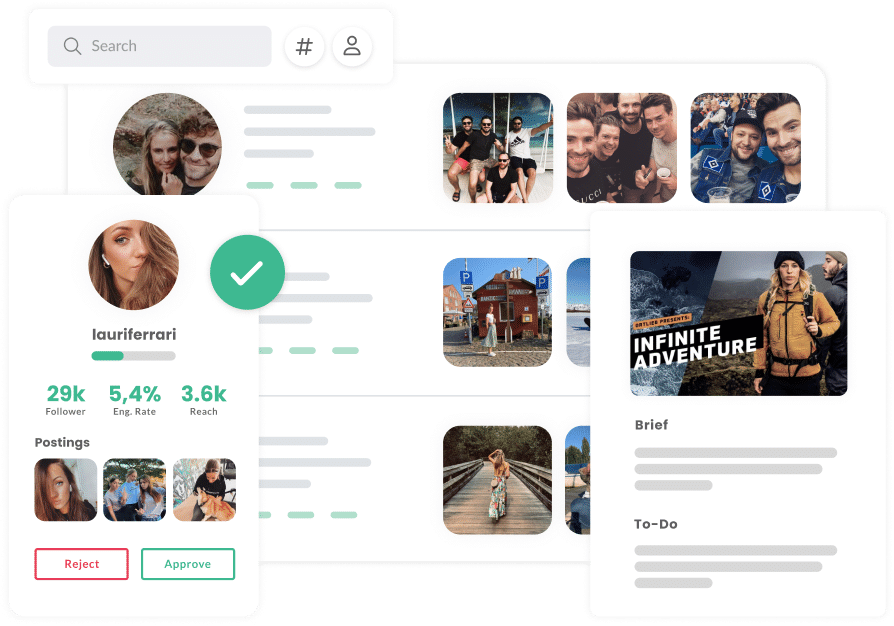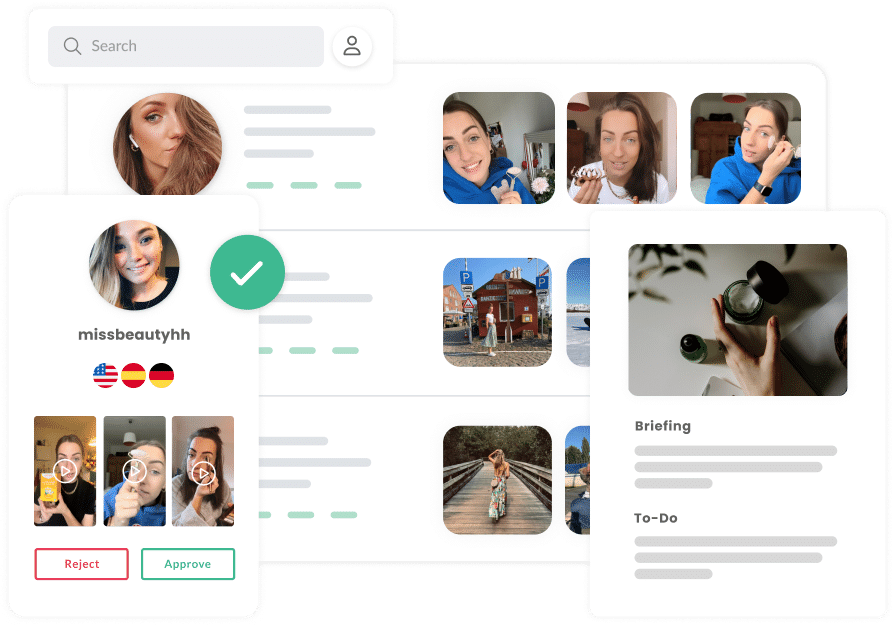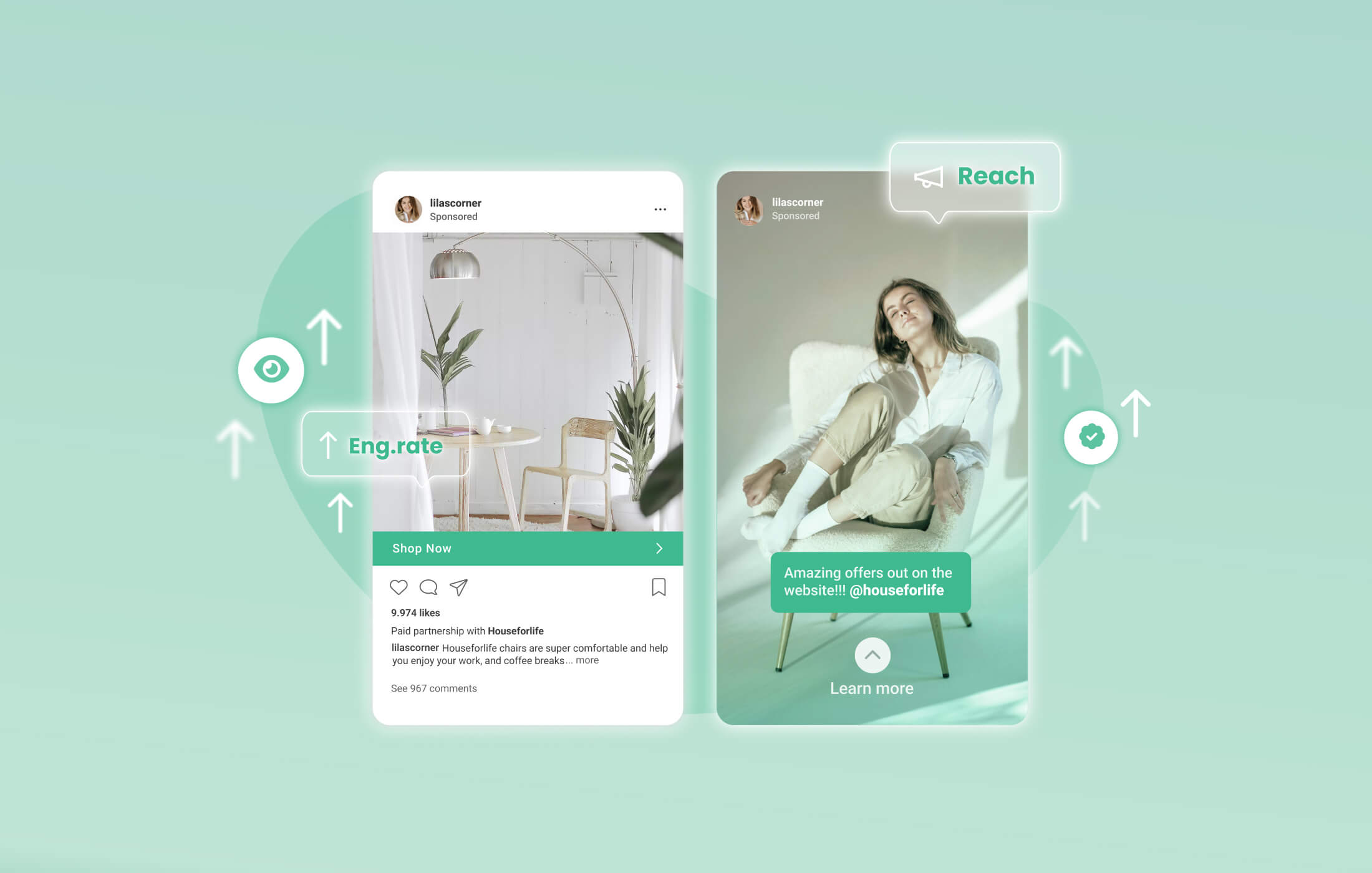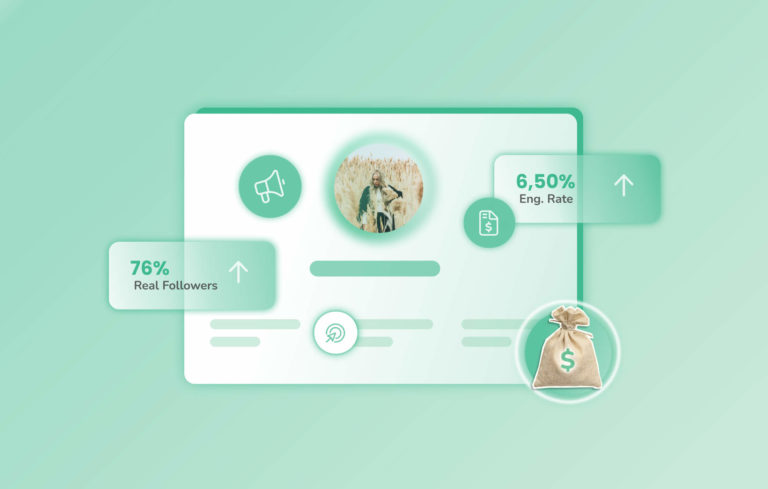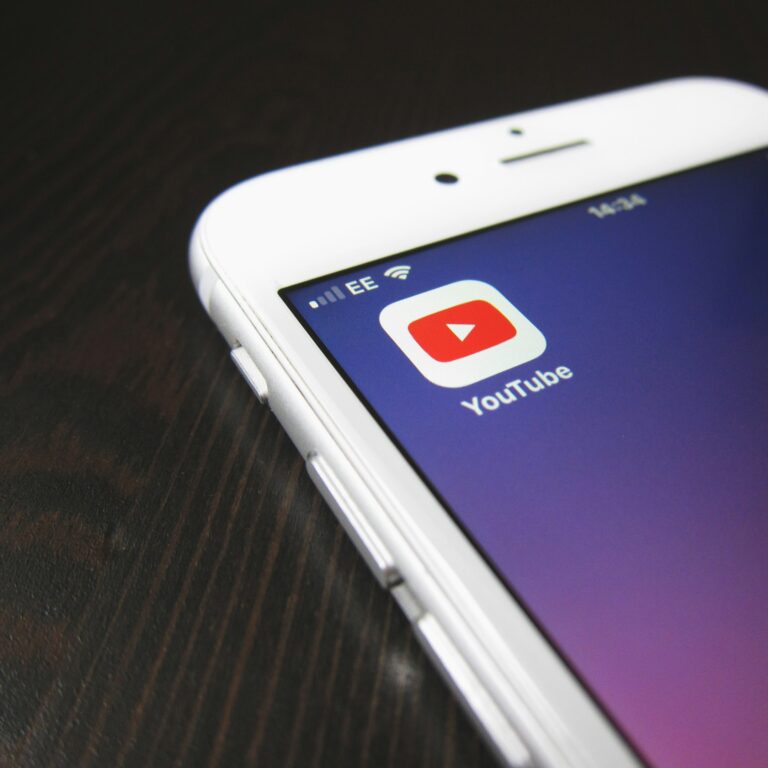Social networks are no longer just a place for sheer entertainment. More and more people are using Instagram, TikTok and the like to get information, consume visual social content and buy products. That is why it is also becoming increasingly important for brands to produce appealing content for social media and place it in a profitable way. One possibility to get authentic visual content is to collaborate with influencers. With the help of influencer whitelisting, the same creator content can be used multiple times, which also makes visual content production more effective. But what exactly is influencer whitelisting and how do you implement it as successfully as possible for your brand? In this post, we will get to the bottom of these questions.
What is Influencer Whitelisting?
What is the difference between influencer whitelisting and sponsored posts?
Influencer whitelisting posts and sponsored posts look very similar at first glance, making them difficult to distinguish. However, there are important differences between the two post types that affect the success of your campaign.
Differences between influencer whitelisting and sponsored posts
Essentially, whitelisted posts and sponsored posts differ in terms of what the goal of influencer campaigns is, which audience is being targeted, and who controls the content.
Sponsored posts are primarily posts that are promoted with money, with the goal to grow your audience and increase interactions (see Facebook). If you work with influencers and promote posts during a collaboration, you not only increase the influencer’s reach, but also promote your brand’s visibility and awareness. The creation and publication of actual content however remains in the hand of the influencer.
Influencer whitelisting goes one step further: brands reuse already existing influencer content for ads and publish them directly via the influencer’s account. Of course, adjustments and changes to the content need to be discussed with creators, but control over the publication of the ad lies mainly in the hands of the brand. This is made possible by the Facebook Business Manager.
The Facebook Business Manager allows you to customize and optimize content, as well as fine-tune your ad goals in detail. You can add links and call-to-action buttons to posts or Stories to increase traffic and conversions on your website. In contrast to sponsored posts, your goals are not limited to increasing brand awareness, but also include, for example, promoting sales or increasing traffic by optimizing content to your advertising goals.
| Sponsored posts | Influencer whitelisting |
|---|---|
| Possible goals: Increase brand awareness and visibility | Possible goals: Increase brand awareness and visibility, increase traffic and conversions on website |
| Publication of content by the influencer | Publication of content by brand on behalf of the influencer |
| Adaptation of content is usually more complicated and lengthy | Content can directly be edited by the brand at any time |
Advantages of influencer whitelisting for brands and creators
Within the influencer whitelisting process, brands need partial access to influencer’s social media channels, in order to place ads directly from their profile. This requires much more trust on the part of the content creator than a regular collaboration for sponsored posts. That is why it is all the more important for brands to communicate openly with influencers and to have clear agreements in place beforehand. Only those who communicate openly with each other can coordinate and optimize processes and build long-term partnerships. If brands master this influencer relationship management, both parties benefit from the advantages of influencer whitelisting.
Advantages of influencer whitelisting for brands
If you communicate goals, wishes and ideas for your marketing campaign openly and honestly with influencers, you actively build a relationship of trust with your partners. This trust is the precondition for launching influencer whitelisting campaigns and, consequently, for benefiting from the advantages of such campaigns.
Authenticity and trust in influencer whitelisting
Influencer content generally provides the advantage that it is much more personal, authentic and appealing to users than classic ads, since it appears in the normal feed like posts from friends. This makes whitelisted ads appear much more natural than traditional ads.
In addition, your brand benefits from the community’s trust in the influencer. Influencers create social proof, which means that subscribers are more likely to trust your brand and make purchasing decisions more easily. Especially in micro influencer marketing, brands benefit from high authenticity and credibility of creators. If you want to learn more about this topic, read our related blog post.
Increase cost efficiency through influencer whitelisting
Furthermore, you increase your cost efficiency with content from creators, because you reuse already produced content and optimize it for your target group. This reduces your production costs while simultaneously increasing performance of your ads. It is especially effective when you get content through product seeding campaigns, as in this case only product and shipping costs are incurred.
Additionally, you extend the life of otherwise short-lived content pieces by repurposing them for ads. For example, Instagram Stories that would otherwise disappear after 24 hours will be visible longer. This increase in efficiency also improves return on investment (ROI) of your ad campaigns. Learn more about influencer marketing ROI and which factors positively influence ROI in our related blog post.
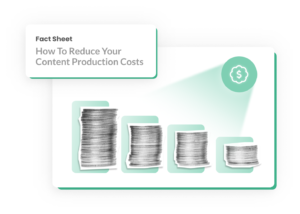
Download our fact sheet now and learn how to optimize content production for your brand and reduce costs in no time.
Analysis, adaptation and optimization of influencer whitelisting campaigns
Apart from that, you benefit from numerous other advantages by working with the Facebook Business Manager. These include:
- Customization and optimization of content to your target audience and campaign goals, for example, incorporation of call-to-action buttons or links to increase traffic or conversions.
- Detailed analysis of performance metrics for your individual ads, making influencer marketing ROI trackable.
- Creation of lookalike audiences to maximize your reach and attract new customers.
- Creation of dark posts to reach a specific target audience and further promote your posts.
To help you understand what dark posts are in the first place, here is a brief definition:
Here are all benefits of influencer whitelisting for brands listed again for you nicely and neatly:
- Improvement of authenticity and credibility of your brand
- Increase of trust in your brand
- Increase in cost efficiency
- Differentiated adjustment of content to a target group
- Detailed analysis data of individual ads
- Generation of lookalike audiences
- Creation of dark posts
Benefits of influencer whitelisting for creators
Not only brands benefit from influencer whitelisting, content creators also gain a lot of value from whitelisting campaigns with companies.
Increase reach and engagement through influencer whitelisting
Perhaps the biggest benefit for influencers is the increase in reach and engagement on their account. With the help of whitelisting, influencers become much more visible, reach potential leads, and gain lots of new followers if the campaign is successful. In addition, other brands, i.e. potential new partners, also become aware of the influencer account through this virtually free advertising.
Analysis of influencer whitelisting campaigns in the Facebook Business Manager
In addition, influencers as well as brands benefit from the analysis of performance data in the Facebook Business Manager. Demographic data and metrics such as the engagement rate provide insight into the characteristics of the target audience that has been reached and which content has proven to be particularly interesting. These insights in turn help optimize posts for future campaigns and make them even more authentic and personal.
Increase in revenue through influencer whitelisting
Another pleasant side effect is passive income that is generated when influencers get a share of profits from paid ads. If an ad with whitelisted content runs well and brings profit, the influencer gets a commission, if this has been previously agreed upon in a contract. Whitelisting is thus an additional source of income for influencers, for which they only have to make minimal effort.
Influencer whitelisting is particularly effective when influencers and partner companies establish a long-term business relationship. If brand and influencer work together for a longer period of time, goals and requirements are clearly defined and work processes are optimized. This in turn gives influencers and companies more time for new projects and campaigns.
Finally, we have listed all benefits of influencer whitelisting for creators here once again:
- Increased reach, engagement rate and visibility of the Influencer
- Detailed insight into performance analytics and characteristics of the target group
- Increase in revenue with ad profit sharing
How To: Influencer whitelisting on Facebook and Instagram
Now it is time to get started with the actual implementation of your influencer whitelisting campaign. Currently, whitelisting on Facebook and Instagram is the easiest way, as there are already various tools for creating whitelisted posts. Alternatively, you can use third-party management tools.
Influencer whitelisting with Facebook Business Manager
In order to work with Facebook Business Manager and design ads, brands as well as influencers must first create an Instagram Business Account and a business page on Facebook. After linking the social media accounts to each other and to the Business Manager, the influencer is able to add your brand as a business partner via your Business Manager ID and then gives you permission to create ads. Now you have the option to run ads through their account instead of your traditional brand account and can easily generate more reach.
Step-by-step guide: Influencer whitelisting in Facebook Business Manager for influencers
Often influencers don’t know how exactly to give your brand permissions to create whitelisted posts. To combat this confusion, you can find a clear step-by-step guide here to share with your influencer partners:
- Open Facebook Business Manager, go to “Business Settings” and click on “Partners” under the “Users” tab.
- Go to the Add dropdown menu and click “Give a partner access to your assets.”
- In the search bar, enter the Business ID of your partner company and then click “Next”.
- Under the “Assets” section, select the Facebook pages and Instagram accounts you want your brand partner to have access to for creating whitelisted posts.
- Set permission to create, modify and delete ads and save changes.
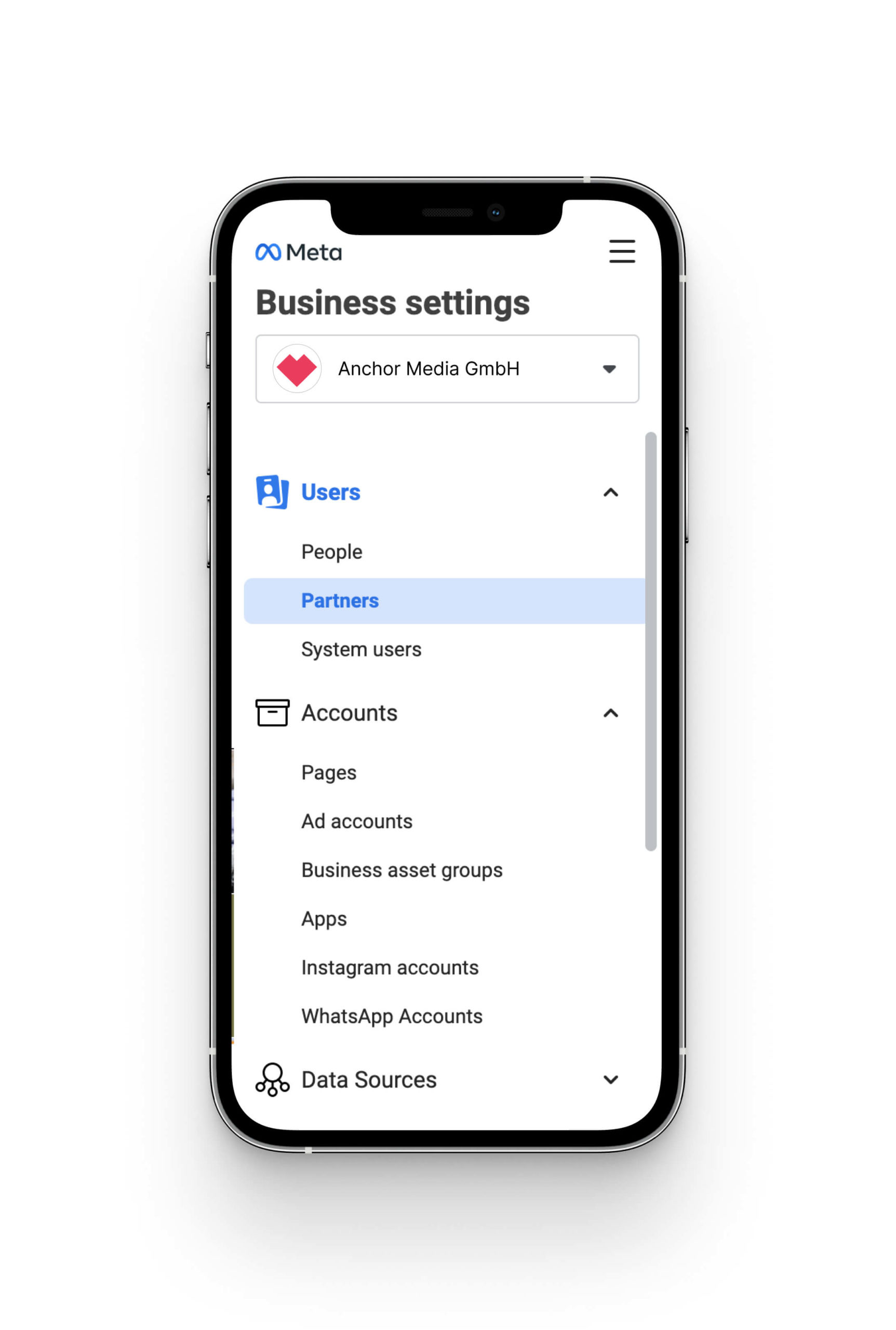
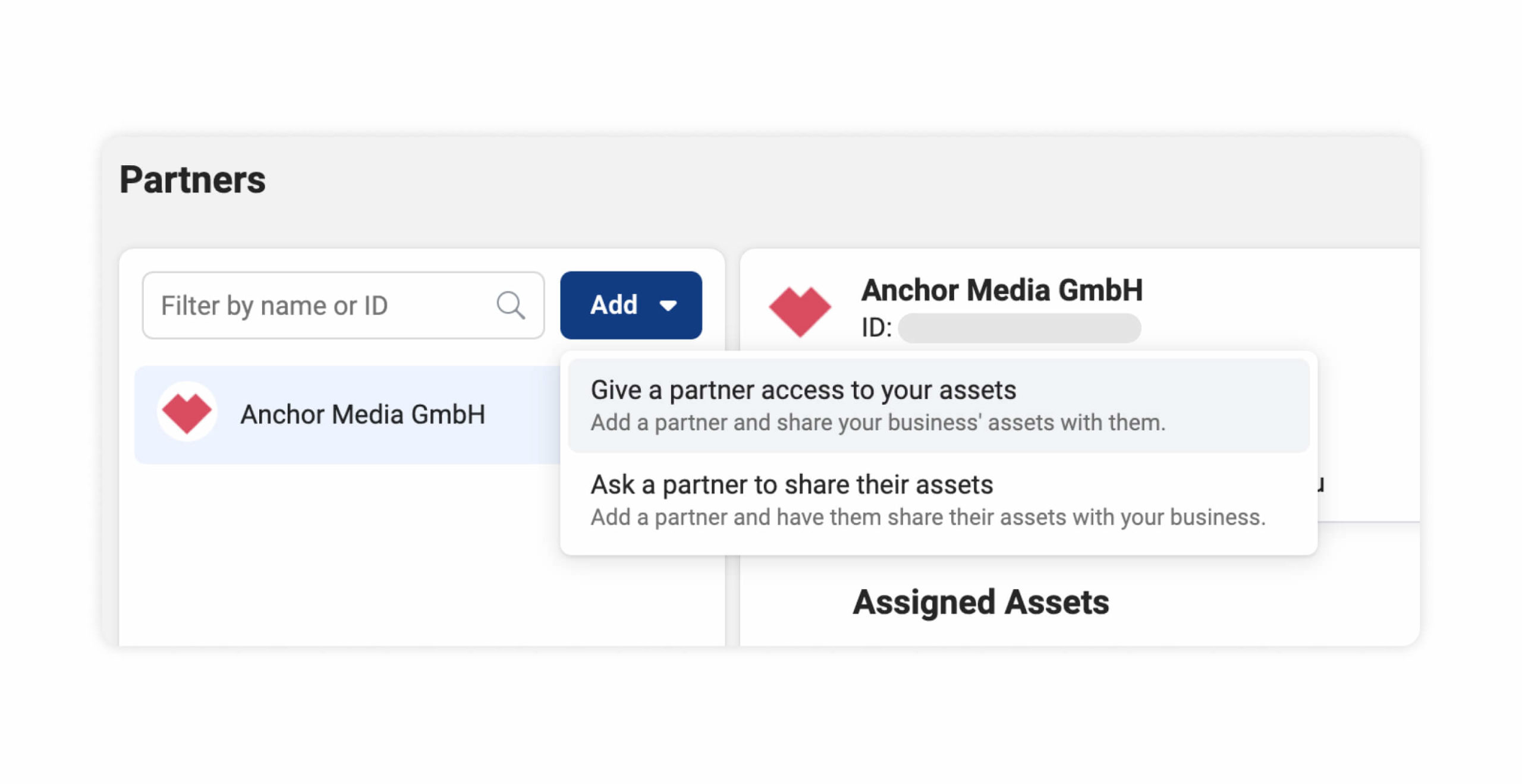
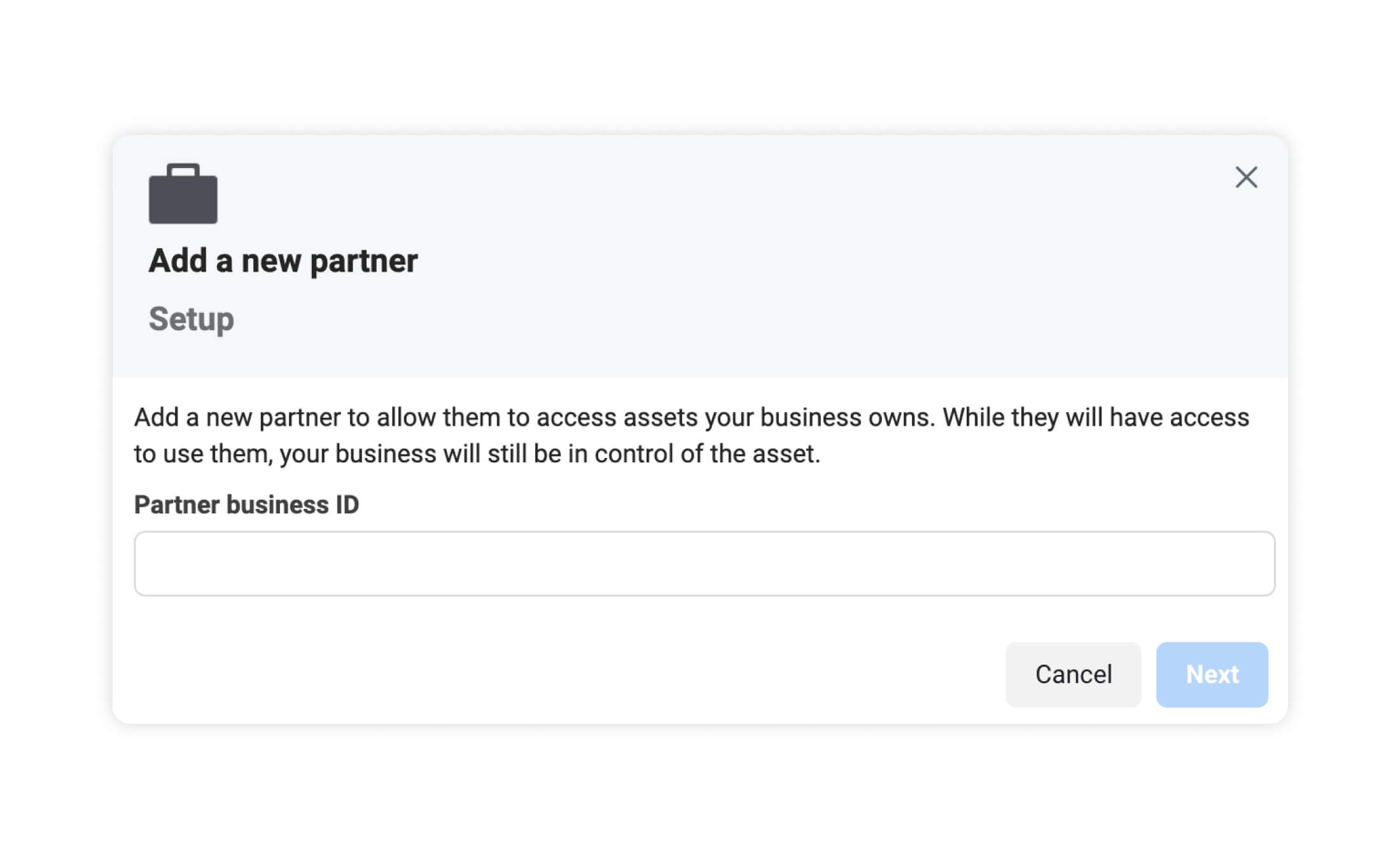
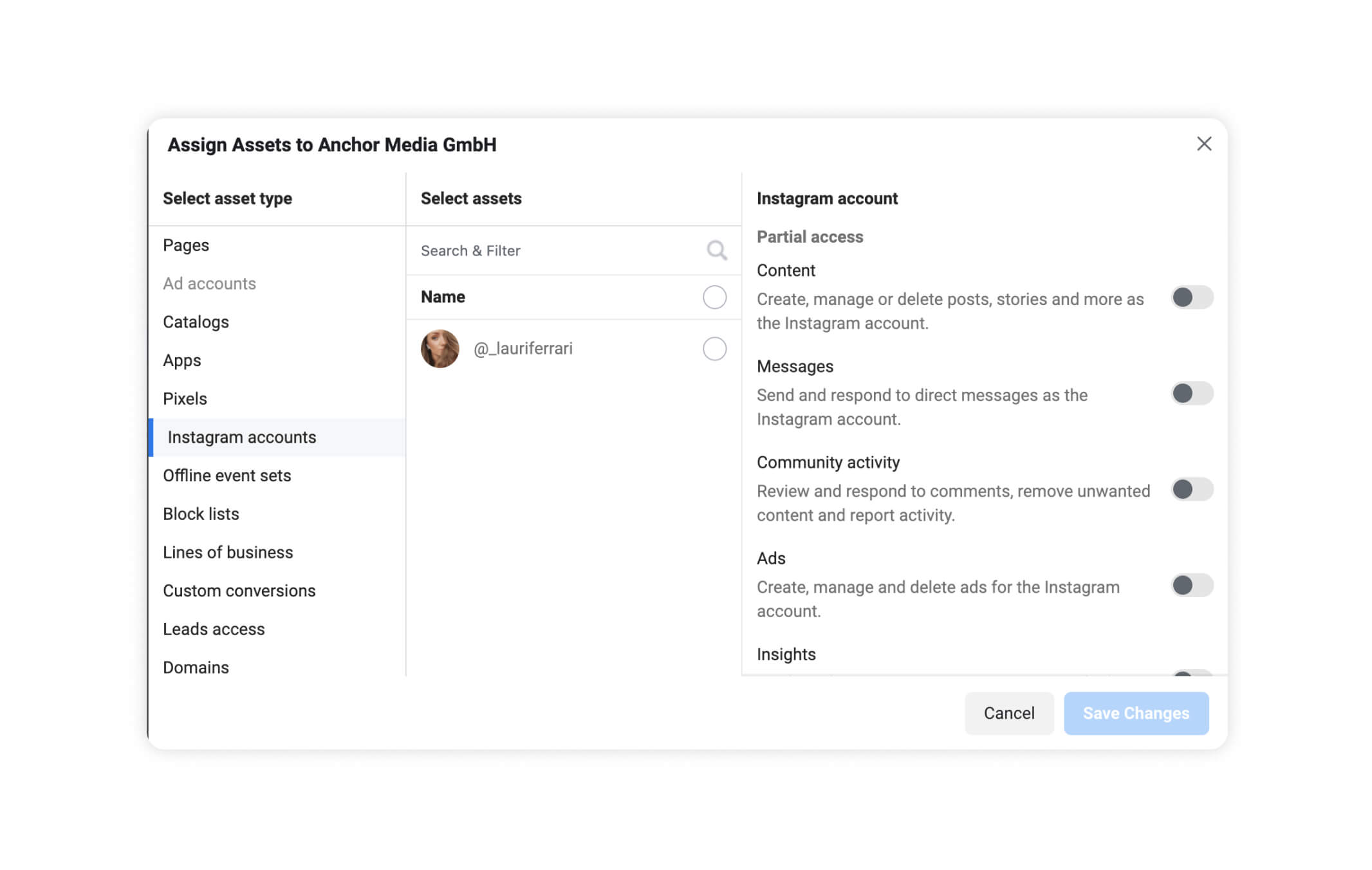
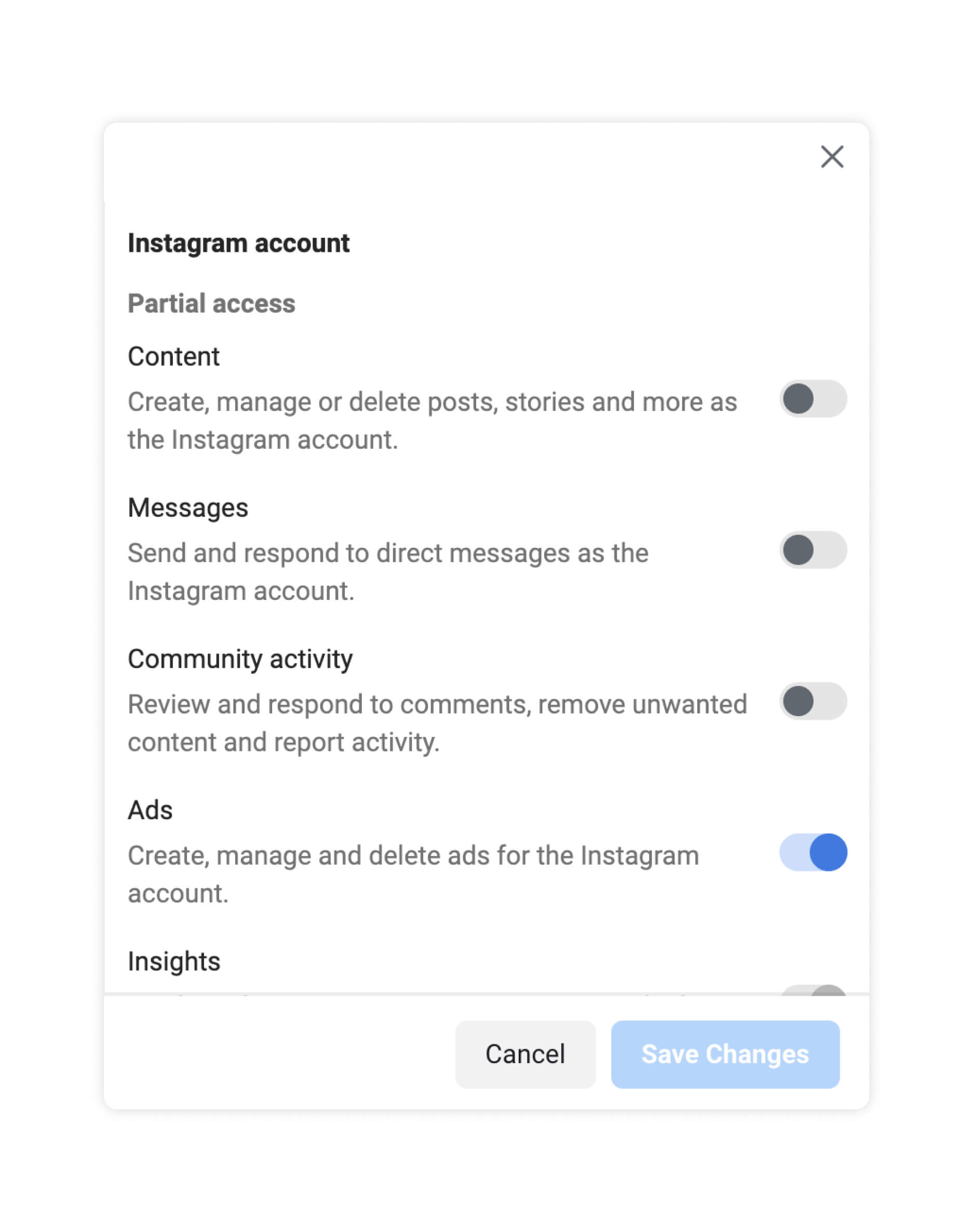
Influencer whitelisting management tools
Apart from tools on Facebook and Instagram, it is also possible to use third-party management tools. With such systems, you simplify and automate complex processes such as giving advertising approvals for your brand. Often, management tools also give you a better overview of all your advertising campaigns and make it easier to find additional influencers, which saves you additional time and energy.
Influencer whitelisting tips & tricks
Now that you know how to integrate influencer whitelisting into your ad campaigns, here are two more tips to help you get the most out of your campaigns.
Communication
Any professional cooperation requires open, clear communication. So, before signing the cooperation agreement with an influencer, discuss whether the influencer agrees to whitelisting their content. Both parties should also communicate regularly whilst cooperating, especially before publishing new whitelisted posts. If transparent communication is maintained, you will build trust and develop long-term business relationships with influencers.
A/B testing
With A/B testing, you compare the performance of two or more versions of a post, a website, or an app to find out which performs better (see sevdesk). For your whitelisted posts, this means: try different content, images, texts and CTAs and compare which version performs best. This way you get maximum engagement and conversions for your brand.
Conclusion
Influencer whitelisting makes it possible to repurpose already existing visual social content from influencers for paid ads. A successful whitelisting campaign requires transparent communication with your cooperation partners. When advertising goals and requirements are clear, brands can define their target group even more precisely, customize ads, and thereby increase cost efficiency of marketing campaigns.
Content creators can better assess their target audience by viewing performance data and gain higher visibility among and outside of their followers through whitelisted posts. Influencer whitelisting thus offers enormous added value for influencers and brands alike – while at the same time being of little effort for both sides.
If you want to learn more about different pricing models for calculating influencer marketing costs, check out our blog post on the topic.
Sources
https://business.facebook.com/
https://de-de.facebook.com/business/help/317083072148603
https://de-de.facebook.com/business/help/164749007013531?id=401668390442328
https://business.instagram.com/ad-solutions/branded-content
https://sevdesk.de/lexikon/a-b-testing/

